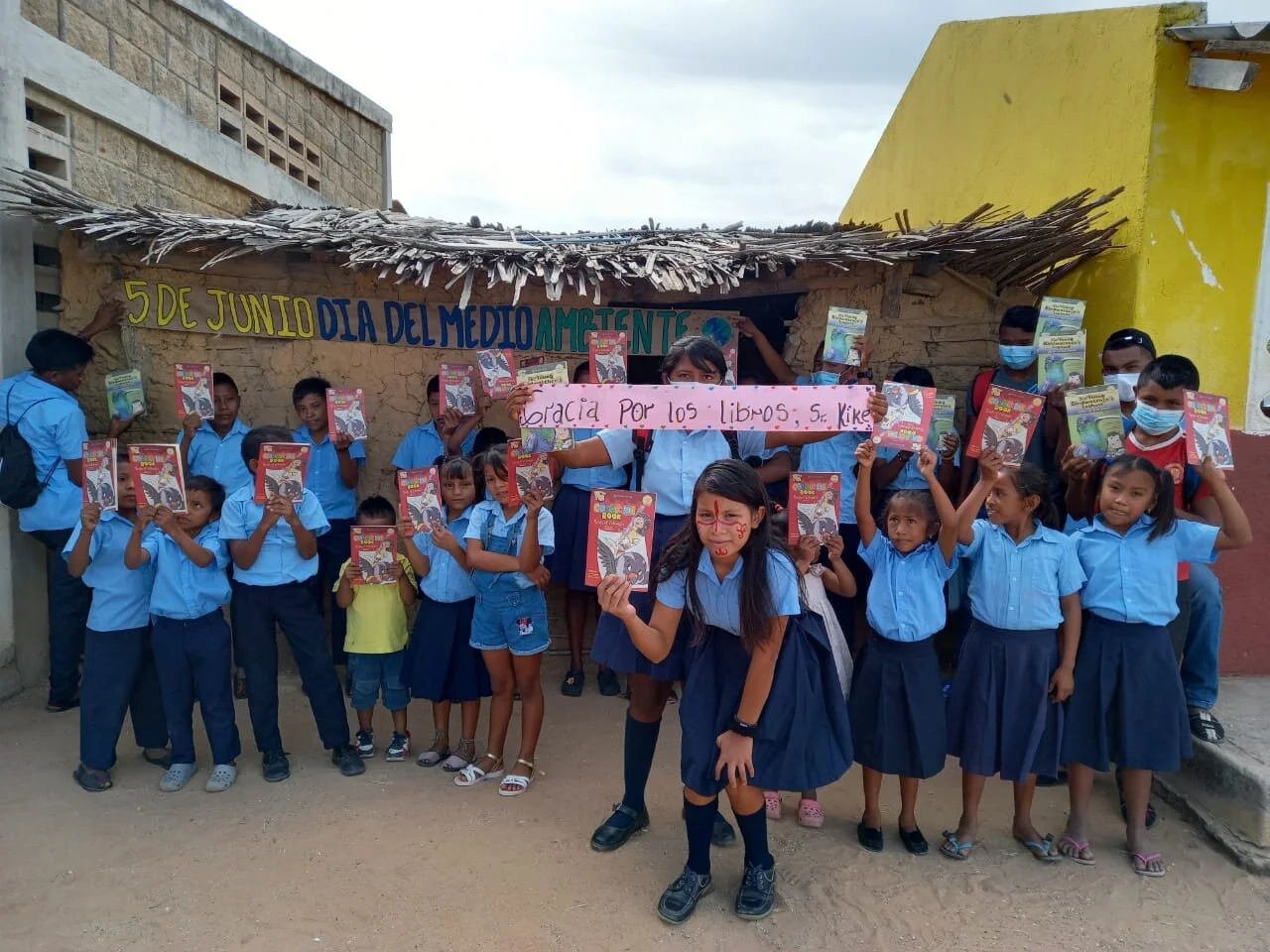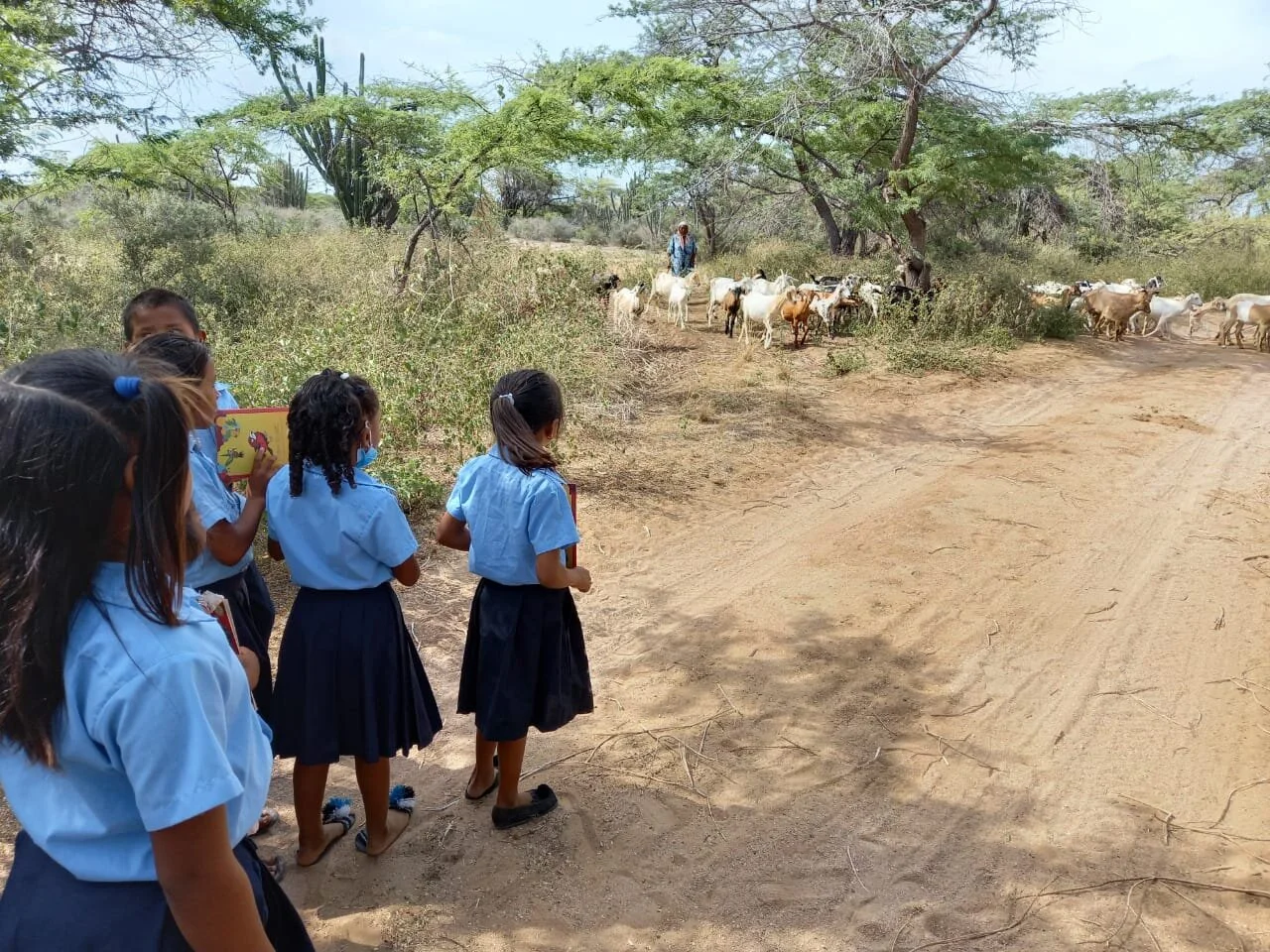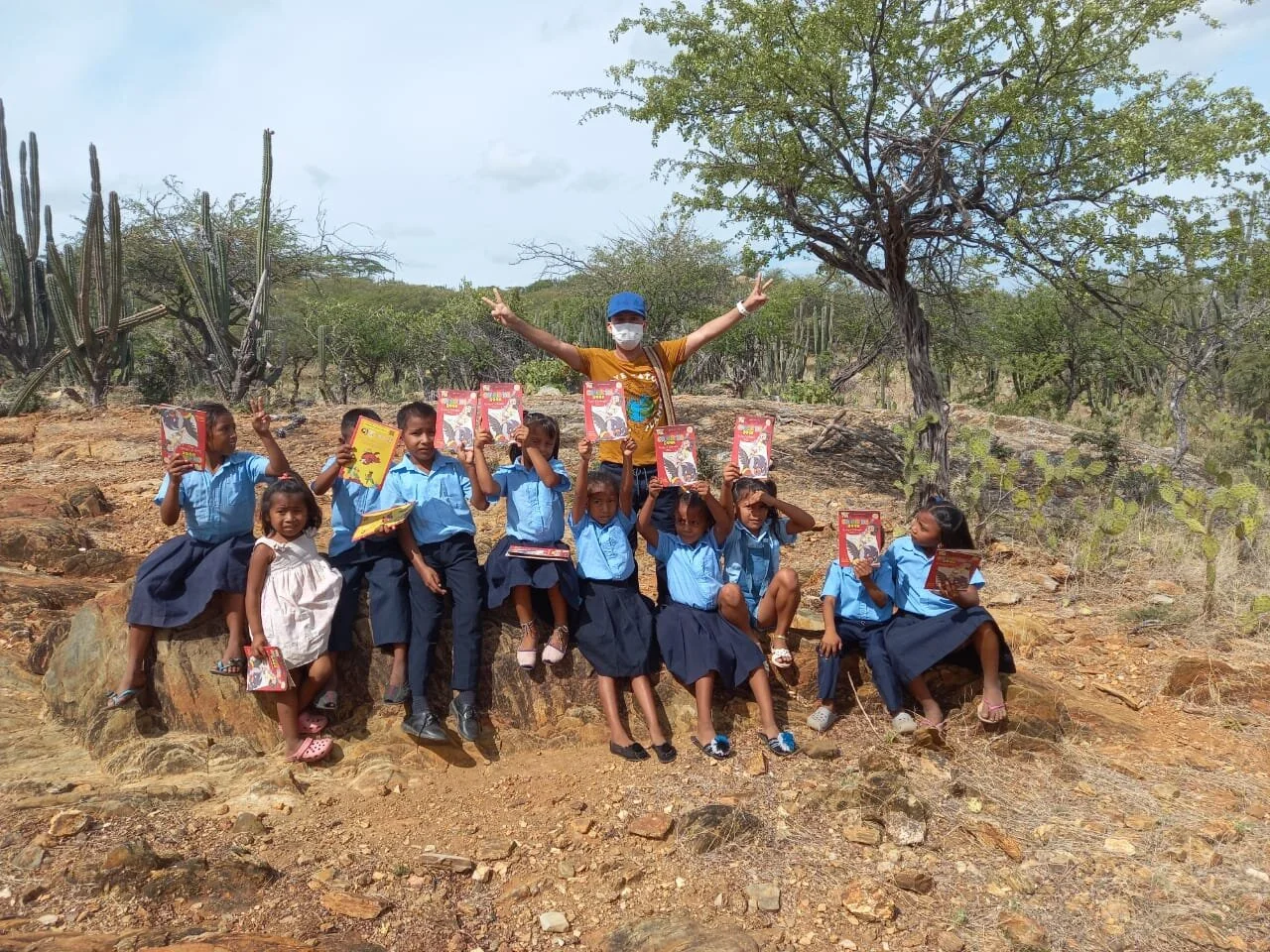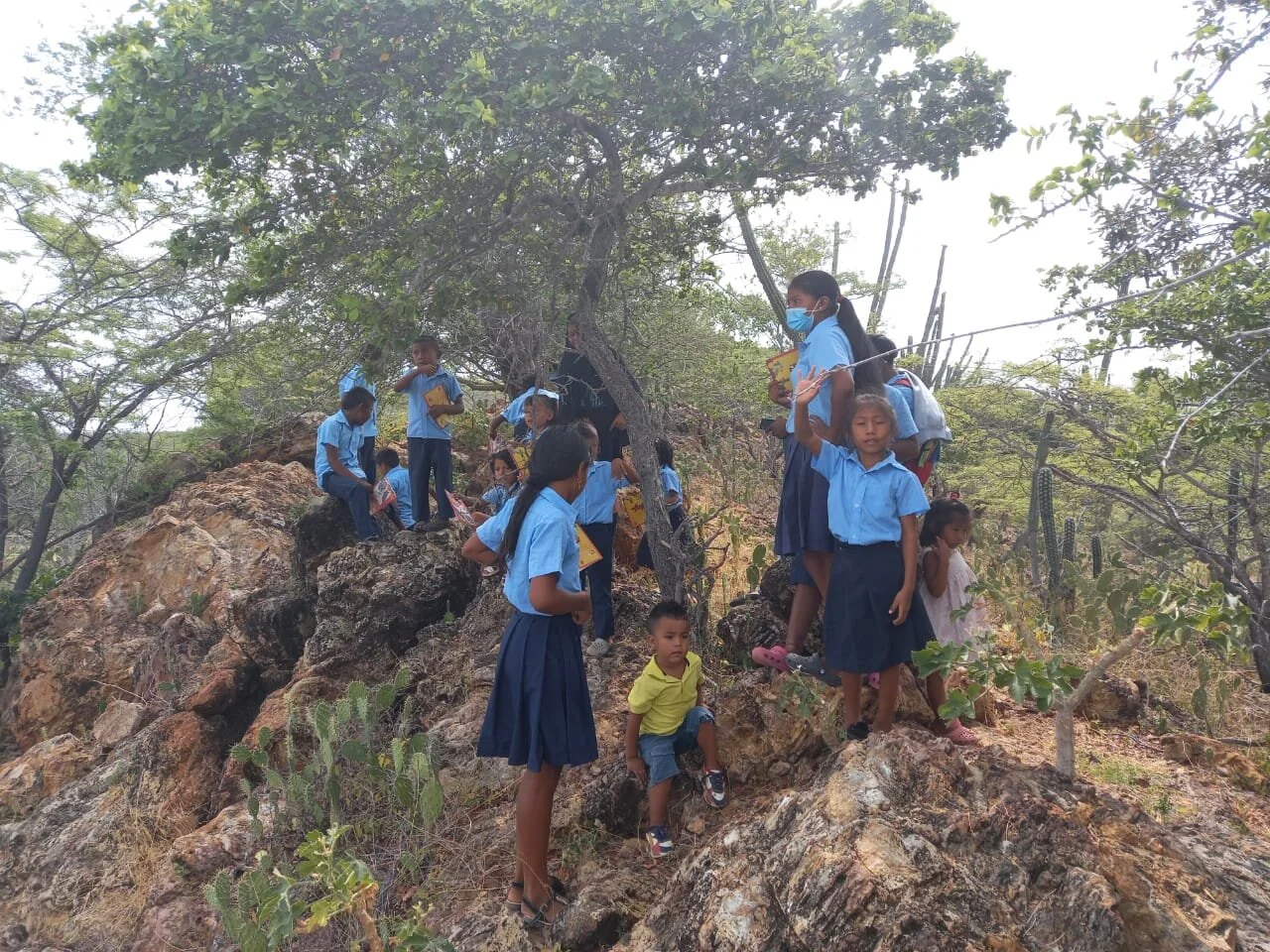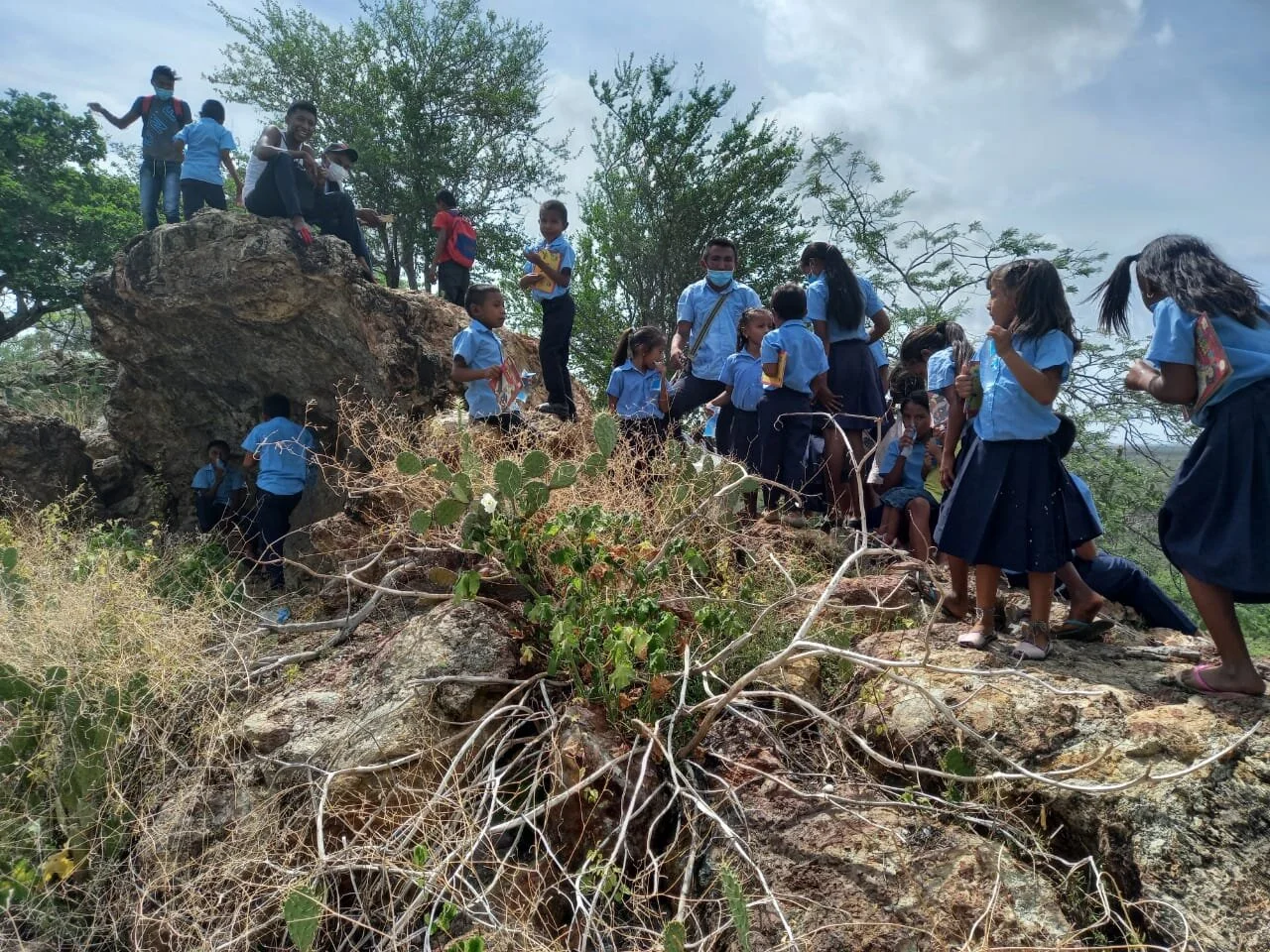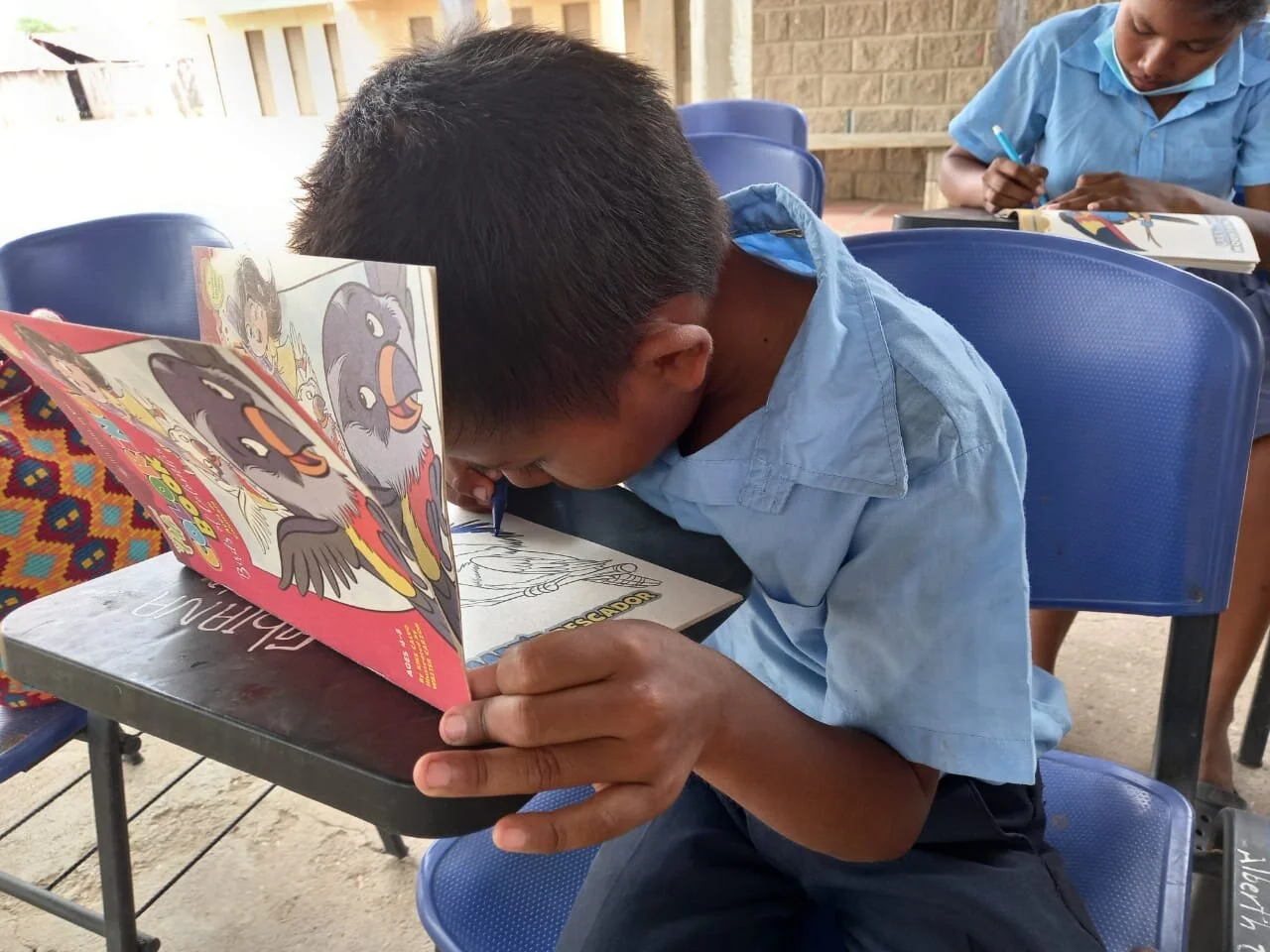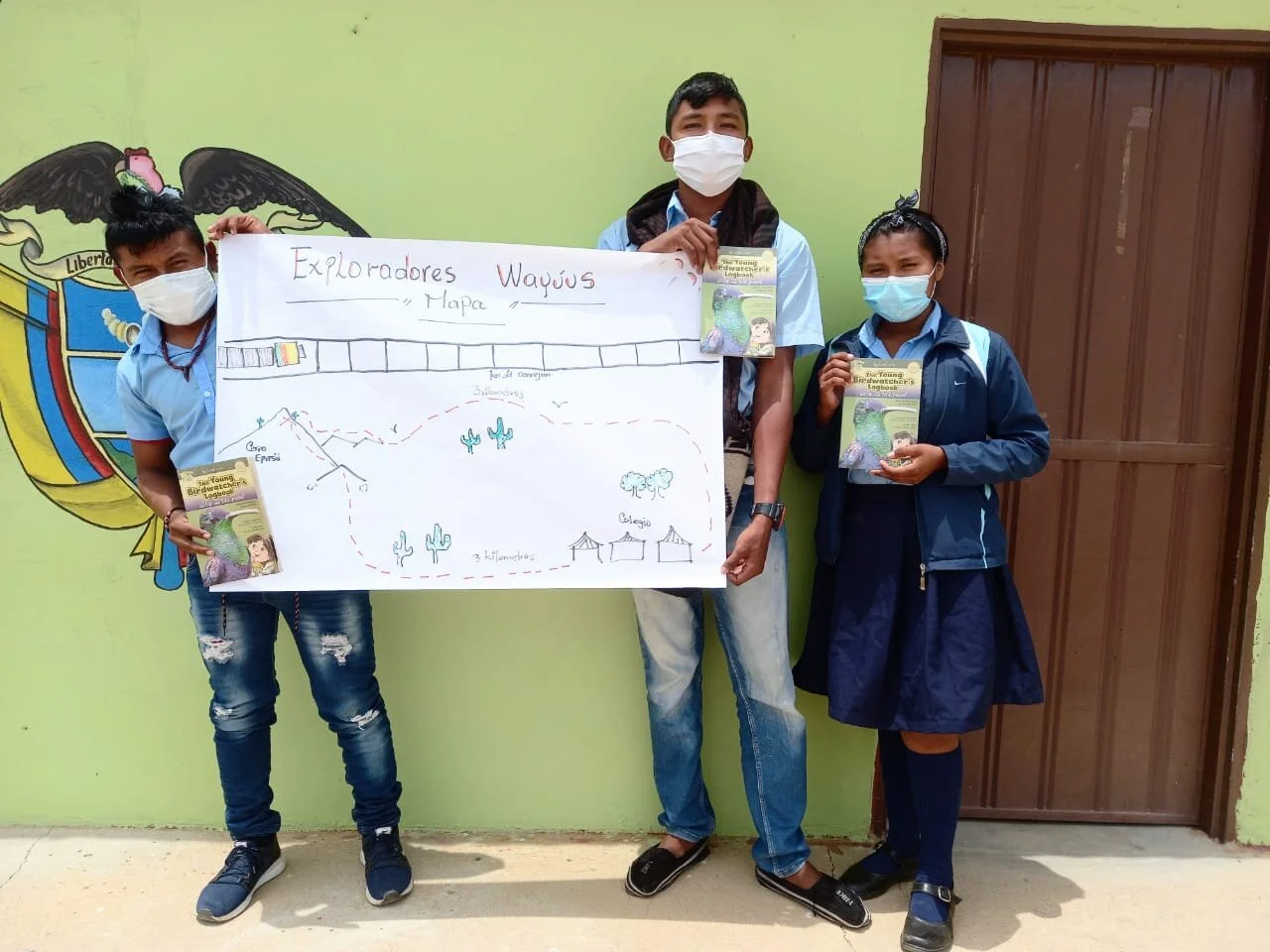World Environment Day in La Guajira, Colombia
Supporting the Indigenous Wayuu children of La Guajira
By Kike Calvo, Safina Center Fellow
Photo: Institucion Etnoeducativa Integral Rural Indigena Puay
Bordering Venezuela, La Guajira is a Colombian department on the Caribbean Sea. Upon arrival in La Guajira, the visitor is overwhelmed by vast open spaces, decorated with desert landscapes, isolated ranches, and fishing villages. This is the land of the indigenous Wayuu people. Non-Colombians may be familiar with this region for its importance as an adventure tourism destination. But for Colombians, La Guajira is not only the home of the Vermillon Cardinal but also a region forgotten by the much-needed Government assistance.
In December 2020, the Departamento Administrativo Nacional de Estadística (Dane) released new statistics on poverty levels in Colombia, positioning the Department of El Chocó as the highest, at 68.4%, followed by La Guajira, with 61.8%. The poverty line is marked at an income of 393,024 Colombian pesos, which is around $107 per month.
At The Adventures of Pili, we seek to continue our efforts distributing free books to children who live in places that are not only remote but also in much-needed help. Many times, these places are too far to be reached by the central support of their countries, if any help at all.
Photo: Institucion Etnoeducativa Integral Rural Indigena Puay
In our early days, we began donating bilingual books, with the collaboration of different organizations. But as time passed, we felt our efforts would have a deeper impact if we complemented each donation with educational activities adjusted to the particular needs of each area. Since April 2021, the month in which I received my National Geographic Educator Certificate, we started including the National Geographic Learning Framework in all our field actions. Since then, we have developed a series of day-activities that local teachers and volunteers can organize with the children. The initial testing was done with my 5-year-old daughter and later put to test in Bonanza Natural Reserve, a former guerrilla territory near the Farallones National Park in the outskirts of Cali, Colombia.
These days, our book donations continue as we impatiently wait for the printing of a special edition of at least 2,000 copies of the new bilingual children’s book titled The Adventures of Pili in Colombia.
All our activities are normally planned ahead with plenty of time, but we keep an open eye on our social media platforms, such as our YouTube Channel. This is how we met Brian Otálora, a Colombian biology teacher at the Rural Wayuu Indigeanous Institution of Puay. Not sure his inquiry would never be answered, Brian posted a comment under our videos, expressing how much his students would benefit from our books. In a matter of days, we moved all the strings necessary to provide copies of Birds of Colombia Coloring Book and The Young Birdwatcher´s Logbook, along with a detailed downloadable class to be used by the local educators. Thanks to our combined efforts, the students of Puay were able to spend a World Environment Day exploring the birdlife around their institution; creating a visual map including local species, and listening to all the reasons why their dry and arid ecosystem is not only extreme but unique.
Above photos: Institucion Etnoeducativa Integral Rural Indigena Puay
Serendipity has always been one of my favorite words in the vocabulary. As a photographer, those fortunate strokes of serendipity, random occurrences by chance that provide great photographic and life experiences have been always been well received. And even environmental education with children requires much more planning than the one needed for solo-traveler exploring the world with a camera, as a project we have learned to remain open, flexible, and aware of those serendipity moments that may bring unexpected joy.

